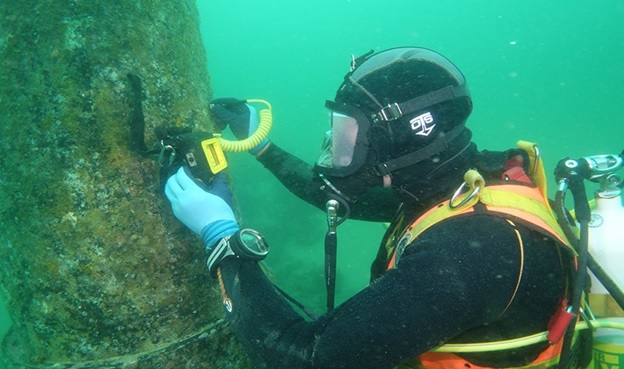I’m sure you’ve passed through or been on dams, bridges, pipeline crossings, or barge terminals. These are water-based infrastructures that is important for all of us, and it’s important to maintain its structure and integrity for continued operation and to build these structures. However, it can be difficult to do so, since these structures are partly underwater.
This is where underwater Inspections for ROV and other water-based infrastructure come along, with experienced and certified commercial divers performing such inspections. But why exactly are these inspections needed? Read on to find out.
Reasons for Underwater Construction Inspections
There are various reasons why underwater construction inspections are conducted. One of the common instances would be due to finding topside visual evidence impending failures, like cracks, the surface collapses, or water seepage. These indicate that the structure is beginning to fail and that the issue may most likely lie underwater.
If not investigated further, it may lead to devastating results.
In other serious cases, post-event inspection occurs. These are done after high-water events, earthquakes, vessel impacts, or other events that may cause shifting, making post-event inspections necessary. For example, flood events may cause scour on the bridge pier’s foundation, and no one will know the damage is there until a failure happens.
Other times, federal regulations would require periodic underwater inspections, especially on critical structures. For example, the Federal Energy Regulatory Commission requires inspections conducted on hydroelectric facilities every 5 years. This makes sure that all dam owners are monitoring the underwater conditions of the structures and to avoid loss of life from any failures that could have been prevented with inspections and maintenance or repairs.
Besides this, another benefit of underwater inspections is that one can save money from them. Similar to people seeing their doctors for regular check-ups, prevention is worth a pound of cure, ensuring that professionals can detect problems to fix them before it’s too late.
Methods of Dive Inspections
So, how exactly are underwater dive inspections conducted?
They would be carried out by trained and equipped dive teams, since underwater work is dangerous, with visibility nearing zero. This is why inspections need to be conducted by commercial divers who have certification by the Association of Dive Contractor International, or ADCI. The divers should also have knowledge of underwater construction.
The dive team would consist of at least three people. On three-person dive crews, one diver enters the water while there is a standby diver to respond to any emergency. The third diver will operate the underwater radio, taking note of the verbal reports made by the diver in the waters and viewing the footage captures by the camera attached to said diver’s helmet, which is recorded via video and audio as he moves along the structures.
If ever there’s limited access, confined spaces, or high-head differentials, then there will be a four-man dive team. An extra diver will increase the safety standards in such precarious situations. It’s best to use four-man dive teams, or more, for most structures.
Divers conducting the inspections would use various tools, including rulers, probes, tape measures, video cameras, and sounding equipment in order to record the inspection. One major benefit of having professional commercial divers perform these inspections is that they can investigate anomalies in detail. Sure, imaging technology can capture anything, but divers are able to measure, explore any small crevices, and test the structure materials’ integrities.
For example, knowledgeable divers can know if the concrete is deteriorated or not using pick hammers, which pictures and videos may not be able to show.
Safer Alternatives
What if underwater construction inspections aren’t possible to do? This may happen if the area isn’t safe or if there are confined spaces divers can’t enter.
In this case, there would be a Remotely Operated Vehicle (ROV) to use. When you add long-reach tethers to an ROV, it will be easier to inspect confined spaces, high-head differential locations, and environmentally hazardous areas safely.
Wrapping It Up
You might wonder why there’s a need for underwater construction inspection, and why not just anyone can conduct them. It’s crucial for these because this can help with the proper maintenance of structures, and help create building plans based on the conditions underwater. It’s also important for professionals to conduct these inspections to get professional and sound advice on how to go about building, maintenance, and repairs of such structures, which can be difficult when underwater.
I hope that this article on the importance of underwater construction inspections helped you out. If you plan on conducting any underwater inspections or plan to specialize in this field, do broaden your perspective on it by learning more about diving and all things underwater now.
Do you have questions or want to share your insight on underwater construction inspections? Share them in the comments section below, all your thoughts and knowledge are much appreciated.
